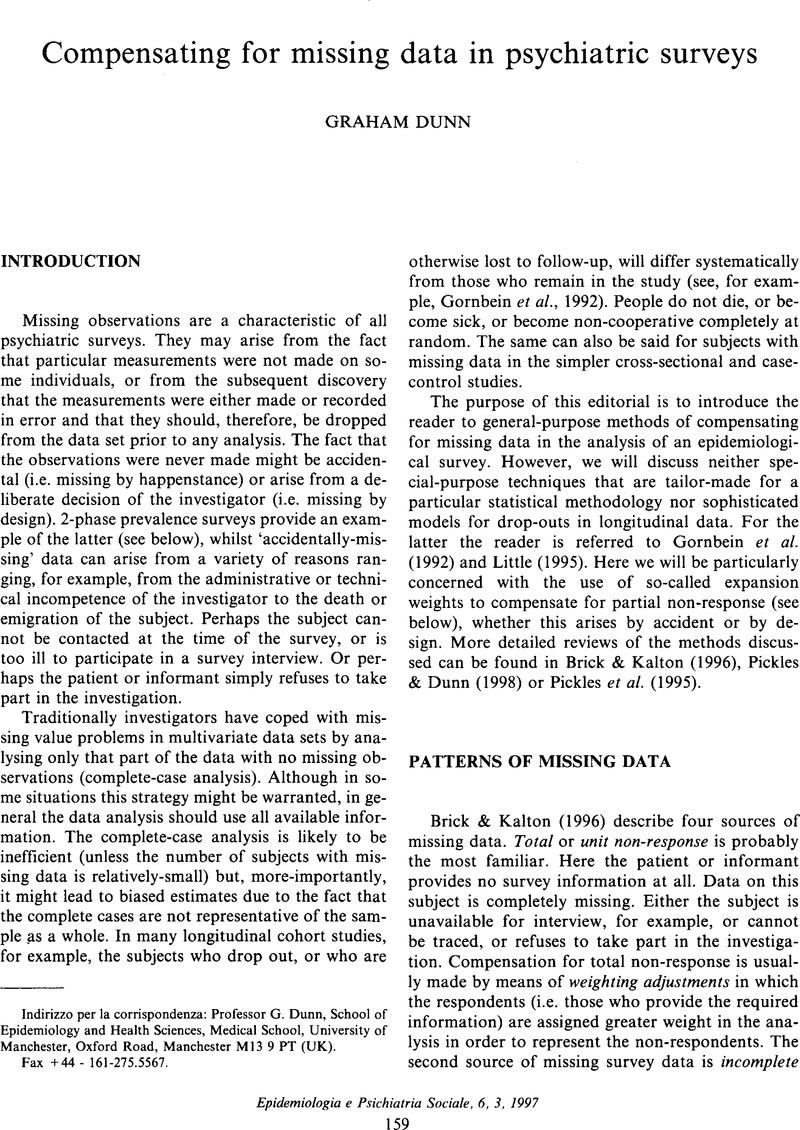Crossref Citations
This article has been cited by the following publications. This list is generated based on data provided by Crossref.
Jacomb, Patricia A
Jorm, Anthony F
Korten, Ailsa E
Christensen, Helen
and
Henderson, A Scott
2002.
Predictors of refusal to participate: a longitudinal health survey of the elderly in Australia.
BMC Public Health,
Vol. 2,
Issue. 1,
Dunn, Graham
2002.
Estimating the causal effects of treatment.
Epidemiologia e Psichiatria Sociale,
Vol. 11,
Issue. 3,
p.
206.
Kennedy, Anne
Robinson, Andrew
Hann, Mark
Thompson, David
and
Wilkin, David
2003.
A cluster-randomised controlled trial of a patient-centred guidebook for patients with ulcerative colitis: effect on knowledge, anxiety and quality of life.
Health & Social Care in the Community,
Vol. 11,
Issue. 1,
p.
64.
Hatch, Stephani L.
Harvey, Samuel B.
and
Maughan, Barbara
2010.
A developmental-contextual approach to understanding mental health and well-being in early adulthood.
Social Science & Medicine,
Vol. 70,
Issue. 2,
p.
261.



